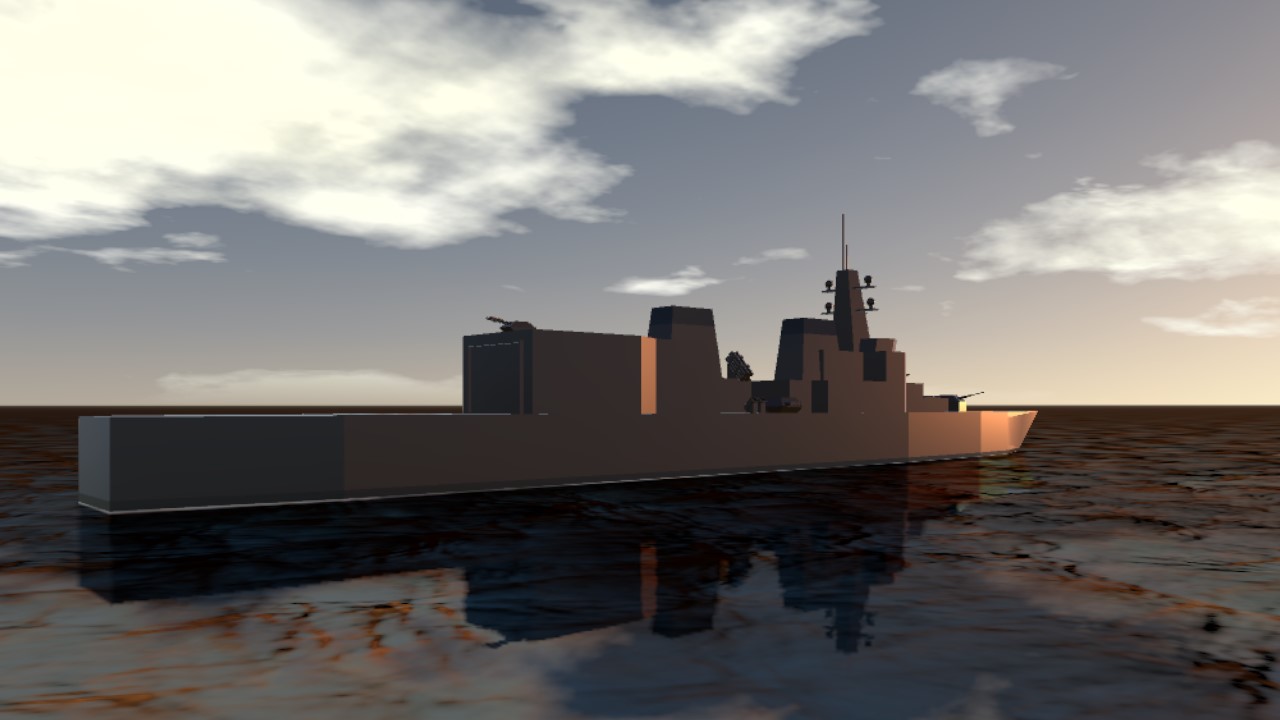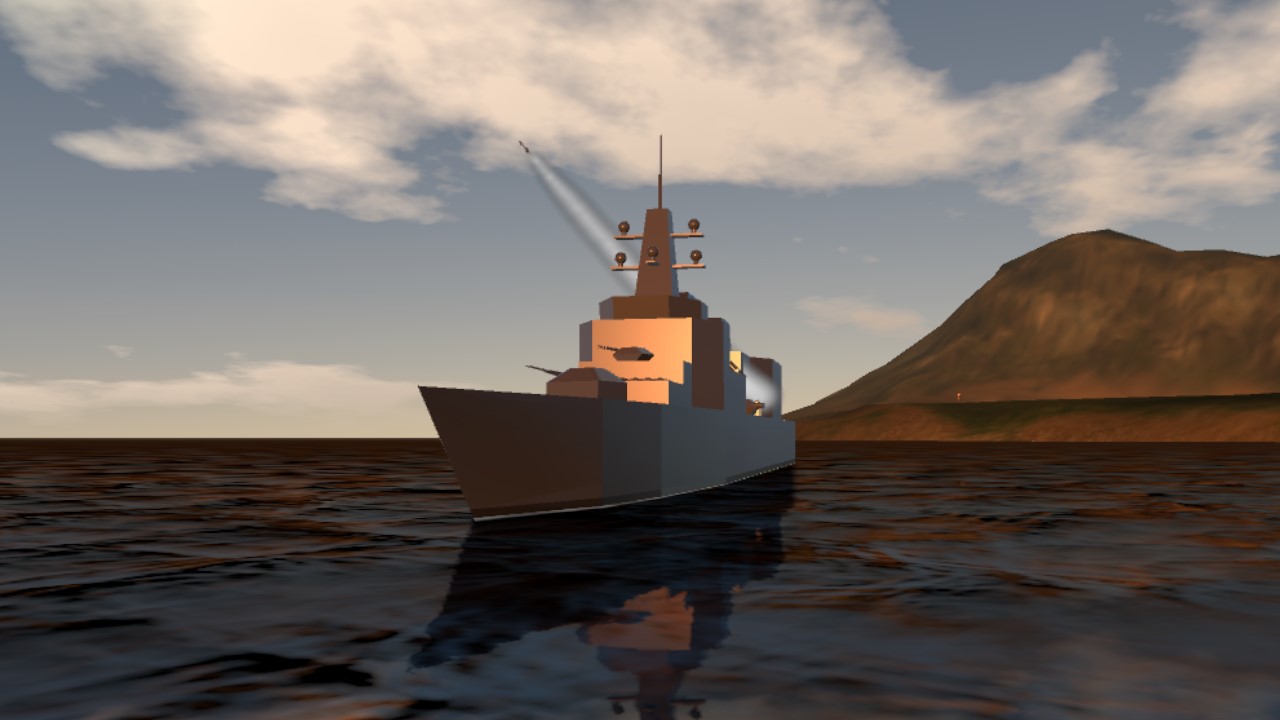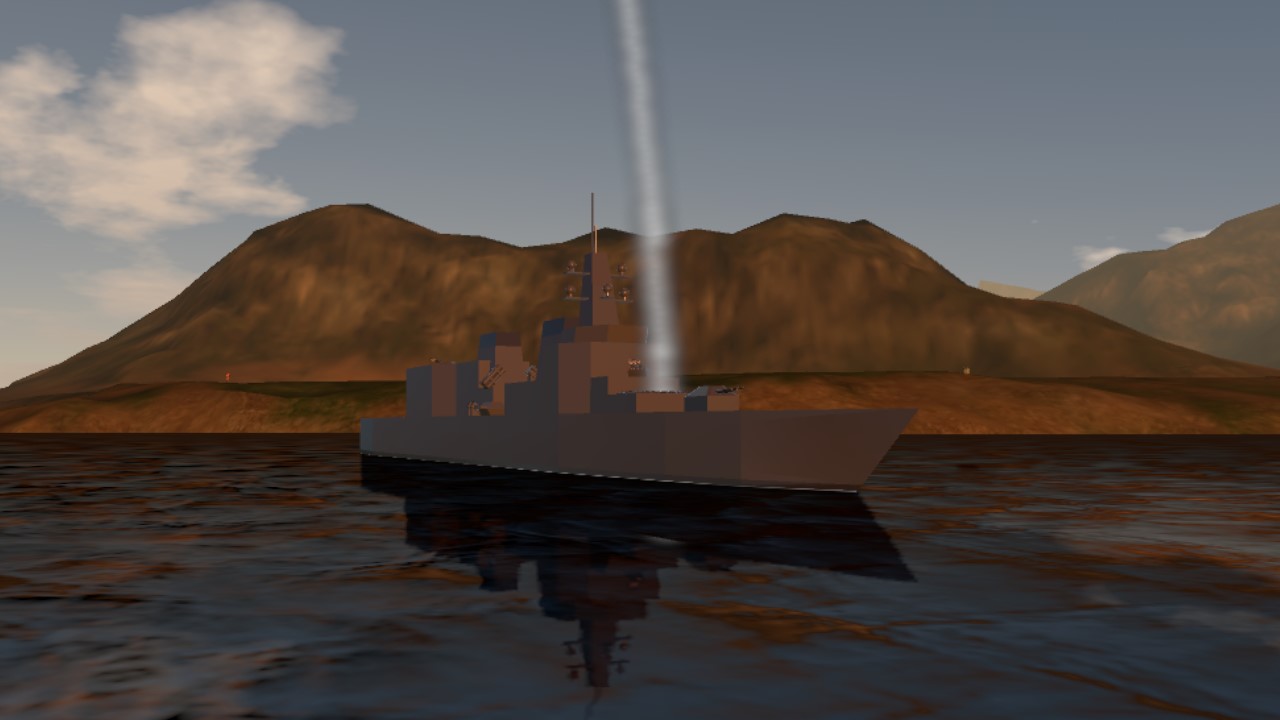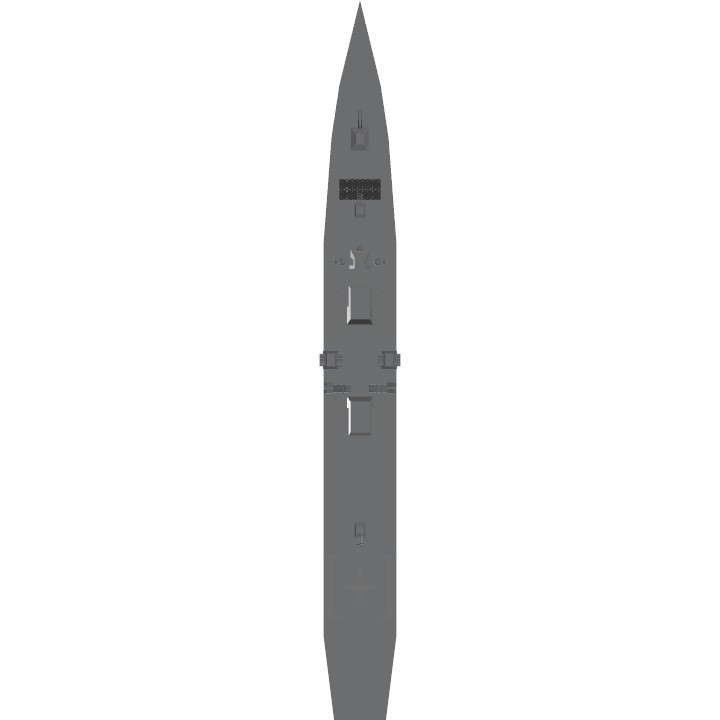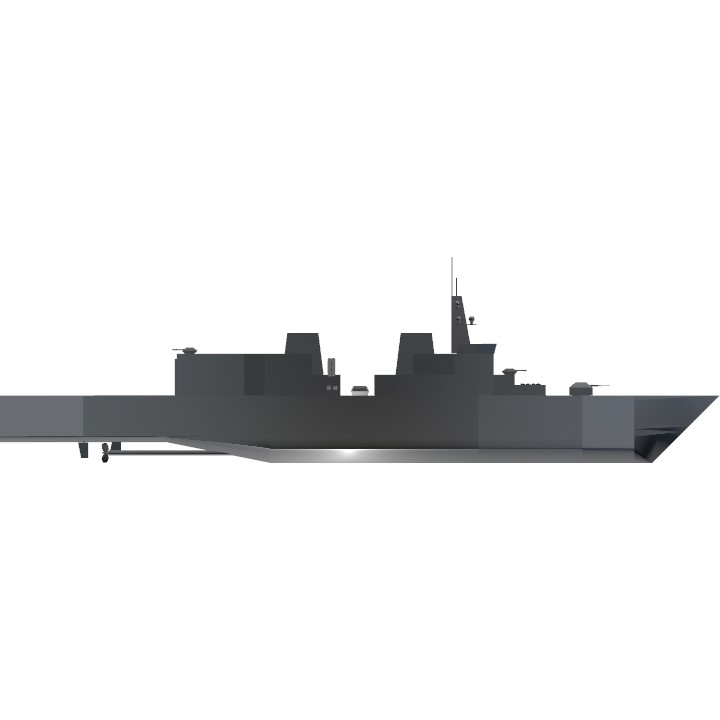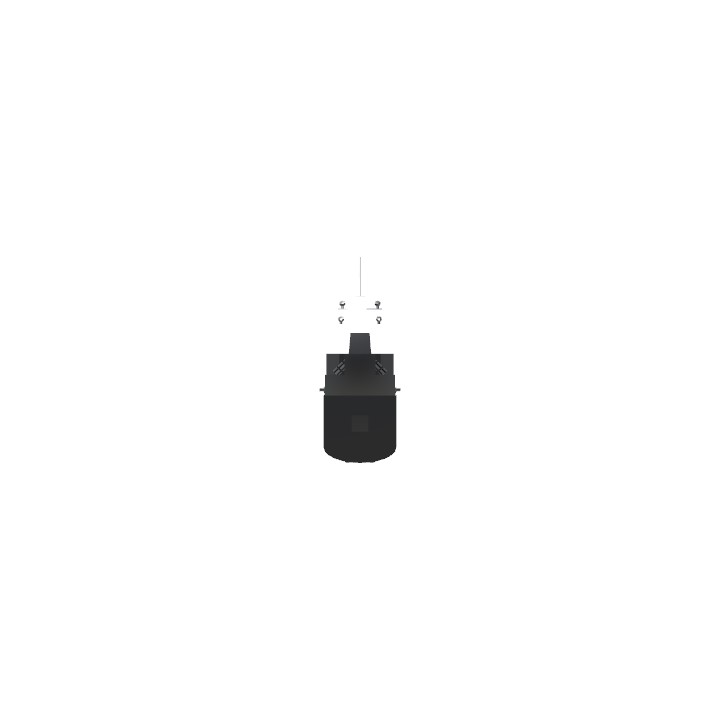Reuploaded for WCU Season 2
The Fubuki-class guided missile destroyers were a class of thirty-two guided missile destroyers built for Japan by Enoshima Heavy Industries during the mid-1960s to the early 1970s. All thirty-two vessels, similarly to their larger brethen in the Fuji-class, were constructed in batches of eight a year apart (compared to the latter's four), and were part of the 'Type-1A' ship design report, combining long range with excellent firepower. In further addition, all thirty-two vessels were also capable of conducting ballistic missile defense and/or anti-supersonic bomber-operations, though they are deployed as a carrier escort vessel as opposed to being stand-by BMD platforms like their larger brethen.
As part of the 'Type-1A-Kai' refit program, starting in 1994, all ships of the class were upgraded over a four-year period to modern standards, amongst which included; phased-array radar and better fire-control radars, an improved 100mm gun, improved missiles and fire-control systems, the newer Type 68 close-in weapon systems, anti-submarine warfare equipment, and a newer electronic warfare suite. The rest of the JINA's ships were also refitted to a similar standard as a new batch of warships would be launched to further bolster their numbers and eventually replace them later on.
Following the naming convention set with the Fuji-class, all ships in the Fubuki-class are named for historic destroyers operated by the Japanese Imperial Naval Arm's predecessor, the Imperial Japanese Navy.
Class overview
Manufacturer: Enoshima Fleet Yards, Kure Naval Arsenal, Maizuru Fleet Yards, Nagasaki Naval Yards
Operators: Japanese Imperial Naval Arm
Preceded by: Akizuki-class
Succeeded by: Takanami-class (under construction)
Built: 1963-1968
In commision: 1964-present
Ordered: 32
Completed: 32
Commissioned: 32
General characteristics
Type: Guided-missile destroyer
Displacement: ~7,500 tons standard
Length: 181.7m (596ft 1 in)
Beam: 17.5m (57 ft 5 in)
Installed power: 8 Kampon water-tube boilers (88,000 shp, 65,648 kW)
Propulsion: 2 shafts, turbo-electric, 4 high-pressure geared impulse turbines
Top speed: 30 knots (56 km/h; 35 mph)
Range: 8,000 nmi (15,000 km; 9,200 mi) at 21 knots
Armor: 37mm waterline and deck, 25mm superstructure, Kevlar anti-splinter plating
Aviation facilities: 1 helipad, 1 helicopter hangar
Aircraft embarked: 2x helicopters
Sensors, processing systems, and electronic equipment
Type 90 air/surface search phased-array radars (4 arrays)
Type 87 sonar array (4 emitters, 4 recievers)
Type 87 towed sonar emitters (4 emitters)
Type 84 fire-control radar (2 mounts fore and aft, retracting)
Type 94 Eihei intergrated combat system (lit. Sentry)
Electronic warfare & decoys
Type 57 flare launchers (2 launchers)
Type 88 sonar interference emitters (4 emitters)
Type 87 electronic warfare system (4 emitters)
Type 92 towed torpedo countermeasures (4 modules)
Armament
1x Type 94 100mm/65 naval gun (twin mount)
2x Type 68 close-in weapon system
8x Type 90 anti-ship missiles (2 quad canisters)
36x Type 57 anti-submarine missiles (4 9-cell canisters)
Type 64 vertical launch system (32 cells)
Type 84 "Long Lance" anti-ballistic/anti-air missile
Type 83 "Flying Lance" anti-ship/anti-air missile
Type 83 anti-submarine missile
Type 92 anti-supersonic missile
2x quadruple Type 90 610mm torpedo launchers
Type 80 "Ocean Lance" torpedoes
Type 90 anti-submarine missiles
Type 90 anti-ship missiles
Ships of the line
note: only ships built for Japan were listed. Export vessels were named by the purchasing nations.
JS Fubuki (DDG-110, 1964)
JS Shirayuki (DDG-111, 1964)
JS Hatsuyuki (DDG-112, 1964)
JS Miyuki (DDG-113, 1964)
JS Murakumo (DDG-114, 1964)
JS Shinonome (DDG-115, 1964)
JS Isonami (DDG-116, 1964)
JS Uranami (DDG-117, 1964)
JS Ayanami (DDG-118, 1965)
JS Shikinami (DDG-119, 1965)
JS Asagiri (DDG-120, 1965)
JS Yugiri (DDG-121, 1965)
JS Amagiri (DDG-122, 1965)
JS Sagiri (DDG-123, 1965)
JS Oboro (DDG-124, 1965)
JS Akebono (DDG-125, 1965)
JS Sazanami (DDG-126, 1967)
JS Ushio (DDG-127, 1967)
JS Akatsuki (DDG-128, 1967)
JS Ikazuchi (DDG-129, 1967)
JS Inazuma (DDG-130, 1967)
JS Hatsuharu (DDG-131, 1967)
JS Wakaba (DDG-132, 1967
JS Ariake (DDG-133, 1967)
JS Yugure (DDG-134, 1967)
JS Nenohi (DDG-135, 1968)
JS Hatsushimo (DDG-137, 1968)
JS Shiratsuyu DDG-138, 1968)
JS Shigure (DDG-139, 1968)
JS Murasame (DDG-140, 1968)
JS Yudachi (DDG-141, 1968)
JS Harusame (DDG-142, 1968)
JS Samidare (DDG-143, 1968)
Controls
Throttle + Yaw: Piloting the ship
Specifications
Spotlights
- ReynaldoHeavyIndustries one year ago
General Characteristics
- Predecessor War Challenge United - Season 2
- Created On Windows
- Wingspan 108.3ft (33.0m)
- Length 568.0ft (173.1m)
- Height 162.5ft (49.5m)
- Empty Weight 74,062lbs (33,594kg)
- Loaded Weight 142,090lbs (64,451kg)
Performance
- Horse Power/Weight Ratio 0.014
- Wing Loading 13.5lbs/ft2 (66.1kg/m2)
- Wing Area 10,489.8ft2 (974.5m2)
- Drag Points 2276
Parts
- Number of Parts 354
- Control Surfaces 0
- Performance Cost 1,958

